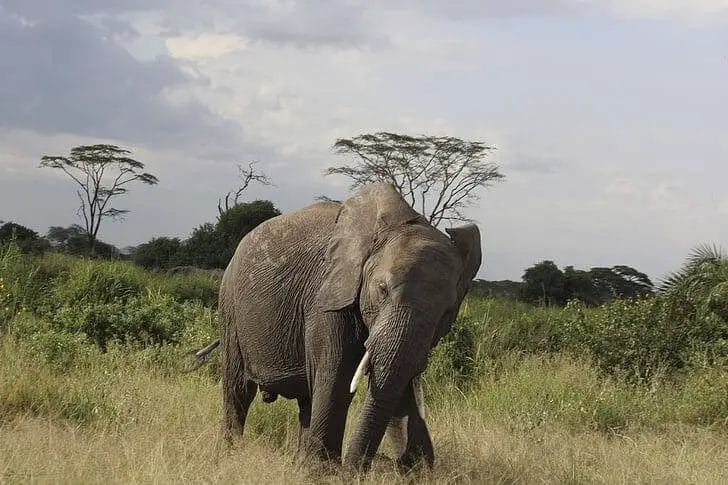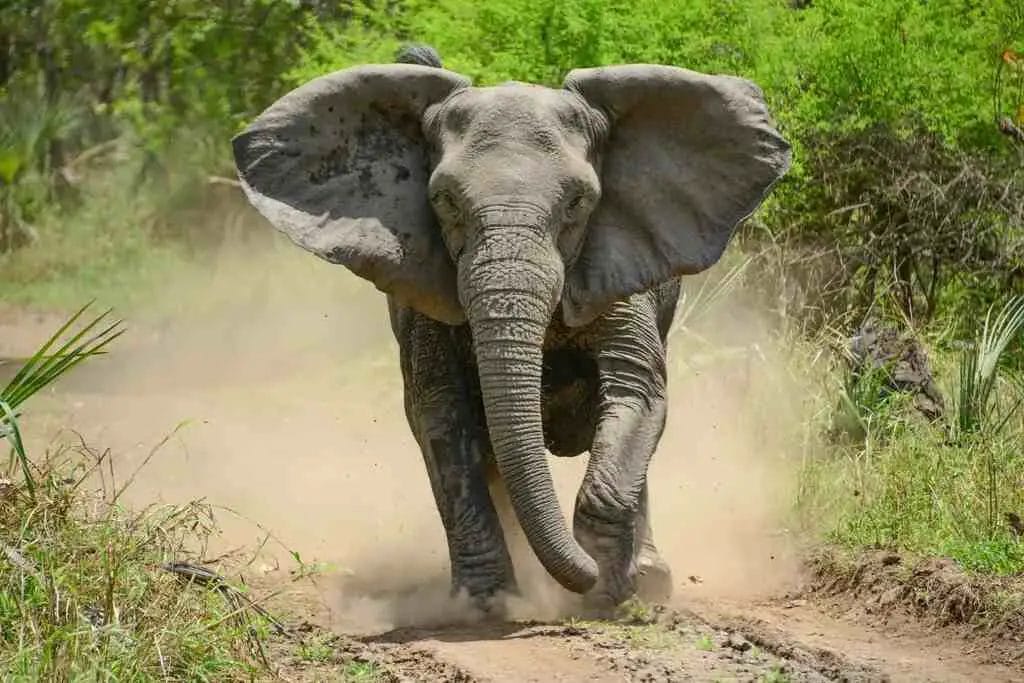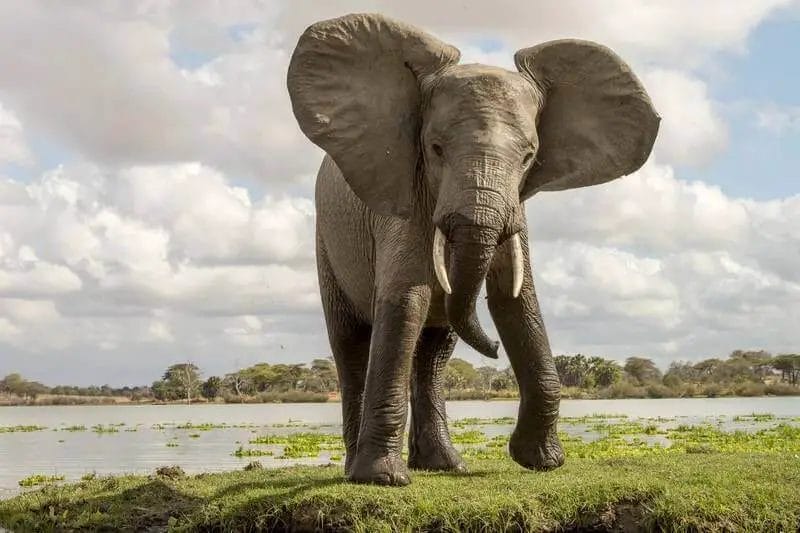Elephants are majestic and intelligent creatures that are known for their complex social behaviors and intricate communication systems. One behavior that is often observed in elephants is swaying.
In this article, we will explore the reasons why elephants sway and examine how this behavior differs in captive and wild elephants.

Reasons for Elephant Swaying
Comfort and Relaxation
One of the main reasons elephants sway is for comfort and relaxation. Elephants are large animals that can weigh several tons, and standing for long periods of time can put a significant amount of pressure on their joints and muscles.
Swaying can provide physical relief by allowing the elephant to shift its weight and redistribute the pressure on its body. Additionally, swaying can also serve as a form of stress relief for elephants.
Just like humans, elephants can experience mental and emotional stress, and swaying can be a way for them to release tension and relax.
Communication
Swaying can also serve as a form of nonverbal communication between elephants. Elephants have a complex system of vocalizations and body language that they use to communicate with each other, and swaying is one of the many ways they can convey information.
For example, a slow, gentle sway may indicate contentment or happiness, while a more exaggerated sway may indicate aggression or distress. Additionally, swaying can also be a way for elephants to communicate with their environment.
For example, an elephant may sway in response to the presence of a predator or other potential threat, signaling to other elephants in the herd that they should be cautious.
Pregnancy and Childbirth
Swaying can also be a sign of pregnancy and childbirth in elephants.
Female elephants, known as cows, will often sway more frequently and more exaggeratedly as their pregnancy progresses, and this behavior may be related to hormonal changes and the physical strain of carrying a large calf.
Additionally, cows may also sway more frequently as they are going into labor and giving birth.
Social Bonding
Swaying can also be a sign of social bonding between elephants. Elephants are highly social animals and form strong bonds with other members of their herd.
Swaying can be a way for elephants to express contentment and happiness when they are with their herdmates, and this behavior can also serve as a way for elephants to strengthen their social bonds with each other.

Swaying in Captivity vs. the Wild
Swaying behavior in elephants can differ significantly between those living in captivity and those living in the wild.
Swaying in Captive Elephants
Captive elephants, such as those found in zoos and circuses, may sway more frequently and more exaggeratedly than wild elephants due to the limited space and lack of stimulation in captivity.
In the wild, elephants have access to a wide range of habitats and environments, and they are constantly stimulated by the presence of other animals and their natural surroundings.
In captivity, however, elephants are often confined to small enclosures and may not have access to the same level of stimulation. As a result, they may engage in more repetitive behaviors, such as swaying, as a way to cope with the monotony and lack of enrichment in their environment.
Effects of Captivity on Elephant Behavior
Captivity can also have a negative impact on elephant behavior in general. Elephants are highly intelligent and social animals, and in the wild, they engage in a wide range of behaviors that are essential for their physical, mental, and emotional well-being.
In captivity, however, elephants are often denied the opportunity to engage in these behaviors, which can lead to a range of welfare issues, including poor physical health, abnormal behavior, and reduced lifespan.
Therefore, it’s important to ensure that captive elephants have access to adequate space, enrichment, and socialization to promote their overall well-being.
Swaying in Wild Elephants
In contrast, wild elephants have access to a wide range of habitats and environments and are constantly stimulated by their natural surroundings. They sway less frequently and their swaying is usually less exaggerated than captive elephants. Additionally, the swaying behavior in wild elephants is related to their natural behaviors such as foraging, mating, and socializing.
Comparison of Swaying Behavior in Captive vs Wild Elephants
Overall, swaying behavior in captive elephants is more frequent and exaggerated than wild elephants. This is due to the lack of stimulation and limited space in captivity which can affect the overall behavior of the elephants.

Conclusion
In conclusion, elephants sway for a variety of reasons, including comfort and relaxation, communication, pregnancy and childbirth, and social bonding.
Swaying behavior in captive elephants is different from wild elephants and captivity can negatively impact the overall behavior and welfare of the elephants. It is important for captive elephants to have access to adequate space, enrichment, and socialization to promote their overall well-being.
This article provides a comprehensive understanding of why elephants sway and the implications for elephant conservation and welfare.
How do scientists observe and study swaying behavior in elephants?
Researchers often observe and study swaying behavior in elephants by observing them in the wild or in captivity. In the wild, scientists may use a variety of methods, including direct observation, remote cameras, and tracking devices, to study elephant behavior.
In captivity, scientists may observe elephants in zoos or other facilities and collect data on their behavior. Additionally, scientists may also study swaying behavior in elephants by analyzing videos or photographs of elephants in the wild or captivity.
How can I tell if an elephant is pregnant or in labor by observing their swaying behavior?
It can be challenging to tell if an elephant is pregnant or in labor based solely on their swaying behavior.
However, pregnant elephants may sway more frequently and more exaggeratedly as their pregnancy progresses, and this behavior may be related to hormonal changes and the physical strain of carrying a large calf.
Additionally, elephants may also sway more frequently as they are going into labor and giving birth.
Can swaying behavior in elephants be influenced by their diet or environment?
Yes, swaying behavior in elephants can be influenced by their diet and environment. For example, if an elephant is not getting enough to eat or is living in a crowded or unenriched environment, it may sway more frequently as a way to cope with the stress and monotony of its situation.
Additionally, an elephant’s diet and environment can also influence its overall health and well-being, which can also affect its swaying behavior.
How does swaying behavior in elephants differ between males and females?
Swaying behavior in elephants may differ between males and females. Adult male elephants, known as bulls, typically live alone or in small groups, while adult female elephants, known as cows, live in larger groups called herds.
As a result, cows may sway more frequently as a way to communicate with and bond with other members of their herd. Additionally, cows may also sway more frequently during pregnancy and childbirth.
What other behaviors or body language can elephants use to communicate?
Elephants have a complex system of vocalizations and body language that they use to communicate with each other, and swaying is just one of the many ways they can convey information. Other forms of nonverbal communication in elephants include trumpeting, rumbling, and head bobbing.
Elephants also use their trunks, ears, and tails to communicate. They may also touch trunks, entwine trunks, or display aggressive postures to communicate with other elephants.
